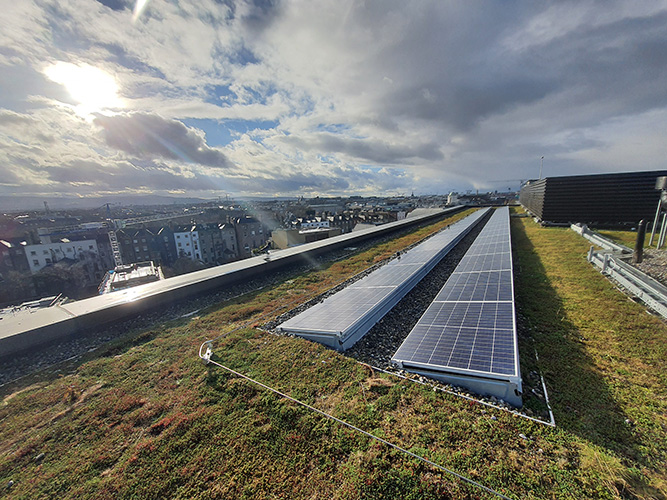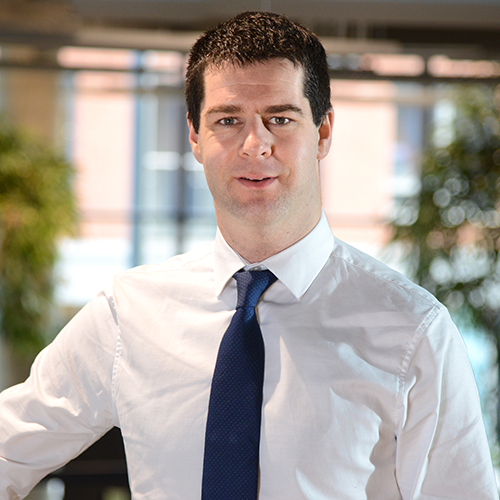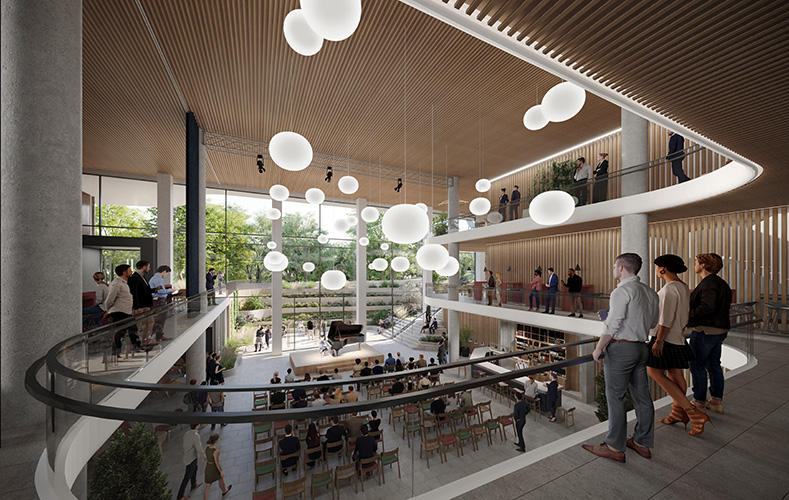

NEIL MENZIES, Director of Sustainability, Hibernia Real Estate Group, writes about the company’s approach to sustainability within its property portfolio and how it intends to become a net-zero carbon and climate-resilient business by 2030.
We talk a lot about the negative environmental impact of aviation and agriculture, but we shouldn’t forget that the built environment is responsible for about 40% of global carbon emissions. Buildings are often taken for granted in the climate debate, but many commercial buildings, holding hundreds or sometimes thousands of people, are carbon-intensive to build, run and maintain.
Thankfully there is a growing awareness of the role low carbon and sustainable buildings have in addressing climate change. At Hibernia Real Estate Group, one of Ireland’s largest office landlords and developers, we have placed the sustainability of our buildings at the core of our operations.
Consumers are conscious of the environmental impact of the cars they buy, the food they put in the fridge and even the holidays they take. Employers and employees are no different when it comes to the spaces that they occupy. We are seeing a strong demand from our occupiers and prospective occupiers to understand the carbon footprint of their building and what it is we are doing to reduce its environmental impact. They are mindful that an environmentally responsible business outlook is what their employees expect.
Occupiers want happy employees, and we want happy occupiers, so there is a positive feedback loop that reinforces the commitment to best practice sustainability standards in buildings. It makes commercial sense, too, given that there is a growing divide in the Dublin office market between premium assets with top-tier sustainability credentials and older buildings where substantial investment in retrofitting will be needed. Buildings will only command the highest rents if they are sustainable.
Hibernia Real Estate Group sustainability leadership
Last year, Hibernia announced our commitment to become a net-zero carbon and climate-resilient business by 2030. We are one of the only property companies in Ireland to set that goal, as well as being one of the first Irish property companies to sign up to the World Green Building Council (WGBC) Net Zero Carbon Buildings Commitment.
We have reached a number of milestones in recent years in our pursuit of being a sustainability leader. In 2021, we achieved a 43% reduction in operational energy use intensity and 42% reduction in operational greenhouse gas emissions versus our 2019 Net Zero Carbon Pathway baseline. We have built several new office buildings to LEED Platinum or LEED Gold standard. And, we have received a four-star rating from the Global ESG Benchmark for Real Assets (GRESB) for the past two years, the leading environmental benchmark standard for real estate, as well as an A- in the CDP climate change questionnaire, placing us in the top 15% of companies responding globally.
Making sure our buildings prioritise the health and wellbeing of those who occupy them is also a key consideration as we emerge from pandemic-imposed restrictions. The return to the office is well underway, but employers and employees want to feel safe, and workplace wellbeing has emerged as a key priority. Access to green, open spaces, as well as areas for relaxation and resetting, is fast rising to the top of the list in terms of requirements.
Briefing for sustainable development
Building on this, we have drafted a ‘Sustainable Development Brief ’ to guide us through every stage of our development and redevelopment pipeline. This pipeline includes major schemes like the Clanwilliam Quarter and Harcourt Square redevelopments and ensures that we have sustainability at the heart of each step of these major projects, which will deliver over 600,000 sq feet of new office space in central Dublin over the next three to five years.
One critical approach we have introduced for new developments, and which is now a priority under the Irish Green Building Council’s new Net Zero Whole Life Carbon Roadmap, is to ensure that at the design stage, we take the opportunity to estimate the carbon emissions for a building and identify innovative ways to reduce these emissions throughout its entire lifecycle.
As an example, Clanwilliam Quarter will aim to reduce construction-related emissions by using lower-carbon concrete and steel with a high-recycled content. We will require the contractor to use low-emissions plant and equipment. We will utilise a hybrid ventilation system for heating and cooling the building, which will radically reduce operational-related emissions.

Financial levers
Hibernia is also using financial levers to ensure our staff take into account climate factors, with an internal levy on the construction-related embodied carbon from projects that will be used to create a carbon-reduction fund that will help pay for energy reduction capital expenditure in our existing buildings. This incentivises the use of lower-carbon materials and construction methods when our staff are working on their own financial models for new projects.
We are mindful that there is more to do, and that is why we apply this decision-making process to our entire portfolio. 57% of our office portfolio by value is rated B3 or better, this is in contrast to only 12% of the national office stock, and it is important that the industry continues to collaborate to increase that figure significantly.
In conclusion
With construction and material costs continuing to rise, it would be easy for the industry to put the issue of sustainability on the back burner. It is vital, however, that this does not happen. We have a responsibility to ensure that our emissions footprint continues to get smaller rather than larger. With rising energy costs, developing buildings to the highest environmental standard will pay for itself over the medium- to long-term while allowing us to do the right thing for broader societal goals.
About the author
Neil Menzies joined Hibernia Real Estate Group as its sustainability manager in 2020 and was promoted to Director of Sustainability in June 2021. He is responsible for the delivery of Hibernia’s sustainability strategy and commitment to become a net-zero carbon business by 2030. Menzies has over 15 years’ experience in environmental and sustainability management/consultancy across the waste, transport and property sectors and has worked in Ireland and overseas. He holds an honours degree in Geography and Economics and an MSc in Environmental Science from Trinity College Dublin. He is also a chartered environmentalist and certified energy manager.

Clanwilliam Quarter
A CGI of communal occupier space in Hibernia’s planned Clanwilliam Quarter on the Grand Canal Hibernia Real Estate Group’s plans for the redevelopment of what will be called the Clanwilliam Quarter are set to break new ground in Ireland for sustainable buildings. The proposed eight-storey office building will provide over 333,000 sq feet of space to LEED-Platinum and WELL-Platinum standards, with an annual energy usage intensity of 55 kWh/m2, a level Hibernia believes will be unmatched across current equivalent buildings in Dublin.
It will be designed with a ‘Passive first’ approach, removing the need for electricity usage wherever possible. For example, smart, natural ventilation will provide high air quality while reducing energy intensity throughout the building. A large rooftop solar PV array will deliver maximum on-site renewable energy generation, whilst heat recovery units will minimise wasted energy. Reduced car parking spaces and increased cycling and charging infrastructure will reduce the carbon generated by people commuting to and from work.
This will all be delivered using materials that have been chosen to minimise the whole of life carbon emissions involved and with significant enhancements to the public realm from which the whole community can benefit.





